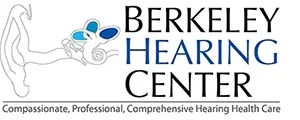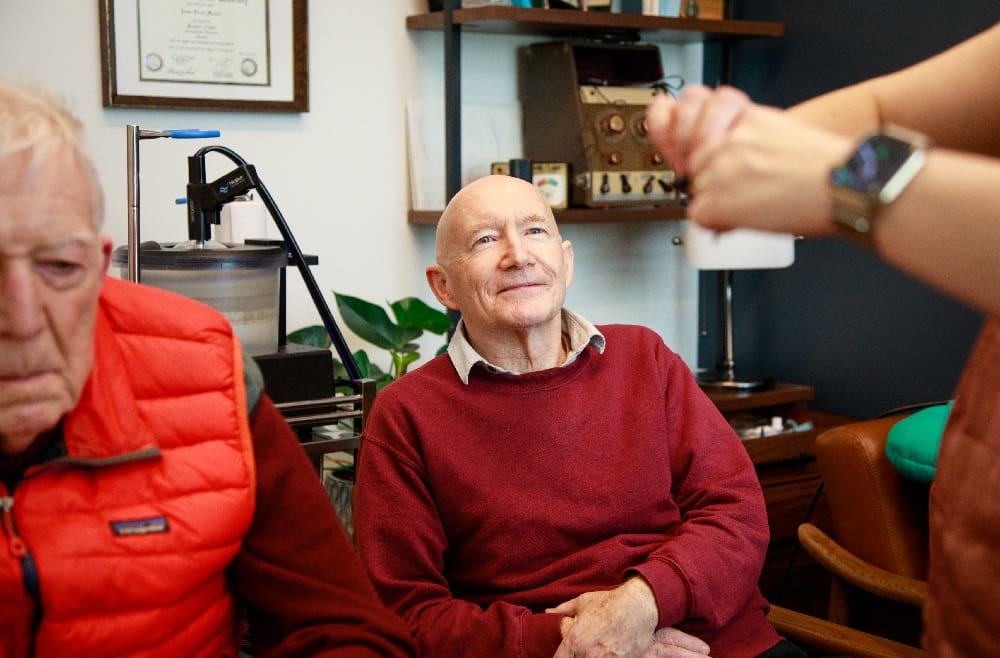2020-10-19
Jonathan Lipschutz Audiologist, M.S., F-AAA, Co-Owner
Around 4 million hearing aids are dispensed across the United States each year.
While this number is lower than the actual number of people who could benefit from hearing aids (NIDCD estimates that over 28 million Americans would benefit from hearing aids), it still represents a significant portion of the population.
But what happens when you put those hearing aids on for the first time?
Is it a storybook romance where everything works perfectly?
Or is it a disappointment?
Typically, it's neither (though it should be much closer to the former). Properly fit hearing aids work wonders. But it can take some time for folks to get fully accustomed to their new hearing aids.
So, what can you expect now that your loved one has decided they want to hear better again?
Let's take a look at the typical journey to better hearing:
1. Accepting the Need for Hearing Aids
Unsurprisingly, the first step is the most important. Your loved one (finally!) understands that they have a hearing issue and need help
Whether they're one of the millions of Americans that have noise-induced hearing loss (NIHL) or aging is the primary factor in their hearing loss; your loved one knows they need a hearing aid to help them hear, communicate, and participate in the world around them.
This first step is crucial. Having hearing issues can be scary, challenging, and uncomfortable. In fact, the majority of hearing loss cases go undiagnosed for years.
Conservative estimates suggest that around 20% of teens, 40% of individuals over 65, and 80% of those over 85 suffer from hearing loss.
Yet, only 12.9% of patients are screened for hearing loss at their doctor.
Unfortunately, many people simply struggle along or “get by” largely ignoring their hearing issues. Not only does hearing loss cause day-to-day disruption if left untreated, but it also worsens over time.
It can impact educational or occupational opportunities.
The simple act of admitting that they have a hearing issue and accepting that they need help puts your loved one well on the way to improving their quality of life and connection to the world around them.
2. The Initial Adjustment Period
Like anything new, there's an adjustment period for their new hearing aids.
Properly fitting hearing aids is always a process.
Your loved one's audiologist will likely need to make adjustments to the programming and/or the physical characteristics of their hearing aids during the first few months as their body and brain adjust.
Hearing aids are not a one-size-fits-all proposition.
Everyone's ears are unique, just as their degree of hearing loss and how they subjectively perceive sound. Your loved one has had years acclimating to how they ‘hear’ with hearing loss.
Hearing aids instantly change that perception (particularly for their own voice), and it can be a little weird/different at first.
It can take some time to adjust to hearing high-pitched sounds, previously undetectable background noises, or dealing with potential physical fit issues.
During this period, it’s imperative that your loved one's audiologist is made aware of any concerns or issues. Just about any issue that arises can be addressed, be it the physical fit or the way the hearing aids are sounding.
But we can only fix the problems we are made aware of.
3. The Adjustment Period
Hearing loss is almost always a slow process, occurring over years. It’s such a slow, insidious progression that most folks don’t realize their inability to hear many of the sounds around them, such as birds singing or the car’s turn signal.
So the moment they start wearing their new hearing aids, your loved one is hearing the world in a different way. This new perception of the world around them is different and will take time to become “normal” again.
This adjustment period is perfectly normal.
Circling back to a previous point, properly fitting hearing aids is a process.
Over time, the initial programmed settings are invariably changed/modified based on how each individual perceives sound.
That’s why we schedule several ‘Real World Adjustment’ appointments during the initial evaluation period and follow up with patients several more times during the first year of use.
Over time, with the assistance of the audiologist, your loved one will zero in on which volume settings work for them, re-acclimate to all of the sounds around them, and learn how to consistently use and care for their hearing aids properly.
4. Practice, Patience, and Happiness
Getting the most benefit of hearing aids is an ongoing process. It requires some practice and a little patience.
Not only does your loved one need to retrain their brain, they need to learn how to use and care for their hearing aids, so they continue to consistently provide their benefits.
This means learning how to put them on and take them off, how to turn them on/off, how to clean them, how to ‘stage-manage’ communication situations to maximize their capabilities based on how they function in different environments, how to take advantage of their Bluetooth capabilities, etc.
All of these things are critical to consistently receiving the incredible benefits they can provide.
Luckily, the payoff is massive. Hearing is arguably our most profound sense. Connection to our loved ones is critical to our mental and physical health.
As Helen Keller, the renowned author/lecturer/advocate for the differently-abled stated: “Blindness separates people from things; deafness separates people from people.”
It helps us understand and interact in our world, and being able to hear those wonderful bird chirps in the morning or crickets at night is definitely worth the relatively short adjustment period.
Our Audiologists Can Help
Your loved one doesn't have to go through this process alone. In fact, your loved one shouldn’t go through it alone.
That’s why we’re here.
Get in touch with our friendly, caring team to get the tools, advice, and care your loved one needs to progress through their acclimation period and into the most crucial step of all — happiness.
Jonathan Lipschutz Audiologist, M.S., F-AAA, Co-Owner






